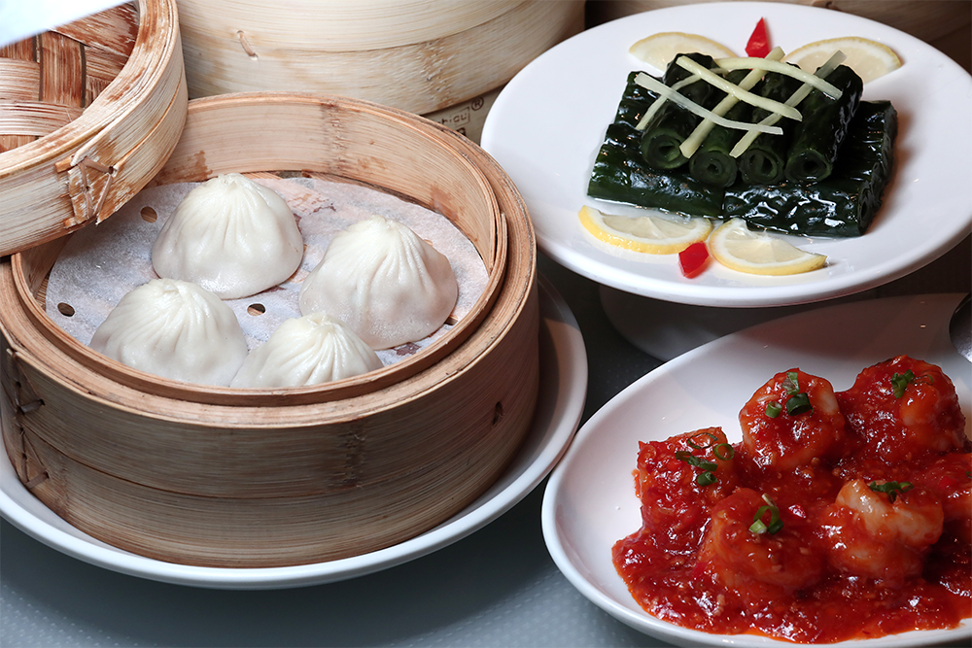What’s the secret to making the best Chinese xiaolongbao dumplings?

I had been enjoying xiaolongbao (“little steamed buns”), also known in Cantonese as siu lung bau, for years before appreciating their semi-mythical status.
There’s general agreement that they originated in China’s Jiangnan region, but beyond that, things can get a little murky.
Some aficionados are very specific with their claims: in the 1870s, they say, restaurant owner Huang Mingxian came up with the idea of adding gelatin to his pork mince.
Patrons of his eatery in Nanxiang, Shanghai, would be delighted to find that, when steamed, the dumplings were filled with soup.
Yet, as with many cultural treasures, plenty of others lay claim to this origin story.
One such legend is that while on his travels, Emperor Qianlong, ruler of China from 1735 to 1796, stopped in Wuxi, in Jiangsu province, where he tried the dumplings, and – by these accounts – went wild for them.
Taking it even further, the most enthusiastic proponents of this version say that the second character, “long”, shouldn’t denote “steamer” (or “steamed”) at all: it’s a homonym for “dragon”, a reference to Qianlong’s nickname, Swimming Dragon.
Phew!
As a complete dumpling novice and know-nothing, I’d always wondered why xiaolongbao are ranked as a bun and not a dumpling
For my part, as a complete dumpling novice and know-nothing, I’d always wondered why xiaolongbao are ranked as a bun and not a dumpling (and please comment if you know). But I digress: on to the fillings!
Xiaolongbao are traditionally filled with pork, but nowadays you’ll find them stuffed with all sorts of exotic ingredients, from truffles to foie gras.
Of course, you’ll always be able to find purists clutching their pearls, shrieking: “Blasphemy, that cannot be regarded as xiaolongbao!”
But it turns out that some communities have been putting other things (for example fish or scallops) in xiaolongbao for years.
The creation of a single xiaolongbao can be considered a piece of fine art, and there are few better places to see this art in action than at Crystal Jade La Mian Xiao Long Bao: the restaurant group has been recognised many times by Michelin Guide’s Bib Gourmand for the skill and effort that go into making its xiaolongbao.
The dough goes through a punishing ordeal comprising seven steps – mixing, resting, pressing, rolling, shaping, rubbing and flattening – before it becomes a smooth sheet of skin still firm to the touch
To begin with, the dough goes through a punishing ordeal comprising seven steps – mixing, resting, pressing, rolling, shaping, rubbing and flattening – before it becomes a smooth sheet of skin that is al dente – still firm – to the touch.
Next it’s the soup, and the heart and soul of any xiaolongbao worthy of the name is the broth within it. Chefs simmer their key ingredients, including an old hen, Jinhua ham and pork bones, for 10 hours before straining it and removing the froth.
Then we come to the next vital component: using a special ratio of fat to meat (and each chef has his or her own magic ratio), the chefs chop and mince the fresh pork, which is mixed with a finely tuned array of seasonings and the aforementioned gelatin stock.
Finally, it’s time for the presentation: each piece is folded around the meat filling into an evenly shaped dumpling, the broth is poured in, and the skin is pleated at the top with between 14 and 22 pleats.
According to legend, Huang Mingxian, back in old Nanxiang, used exactly 14 pleats – a standard that many chefs still observe religiously.
The dumplings are then steamed for seven minutes. Now, finally, they’re ready to be served.
After all the hard work that goes into preparing these little food parcels, your only task as a diner is to eat them.
There are at least a couple of schools of thought regarding how to go about this:
The YOLO (you-only-live-once) method of eating xiaolongbao: carefully grasp the top of a xiaolongbao with chopsticks, and pop it whole into your mouth. But be warned ... it could end in tears
The genteel method:
Carefully grasp the top of the xiaolongbao with your chopsticks so as not to puncture the skin, and place it on a spoon.
Give one of the sides a small bite, or puncture it with a chopstick, allowing the soup within to fill your spoon.
Sip the broth and take time to consider its delicate flavour, before taking a bite of the juicy bao itself.
The YOLO (you only live once):
Carefully grasp the top of a xiaolongbao with your chopsticks, and pop it whole into your mouth.
Chomp down on it, causing it to explode, filling your mouth with soup.
Note: this method is the more exciting of the two, but be warned: it could end in tears, as the hot broth can easily scald your mouth.
So how do you eat yours? And does anyone out there have any more light to shed on the story of xiaolongbao?
How much did our doofus writer get wrong?
Let us know in the comments.
Want more stories like this? Sign up here. Follow STYLE on Facebook, Instagram and Twitter

Xiaolongbao or siu lung bau – whatever you like to call these delectable little parcels – are a Chinese institution. But what dark sorcery lies within?


